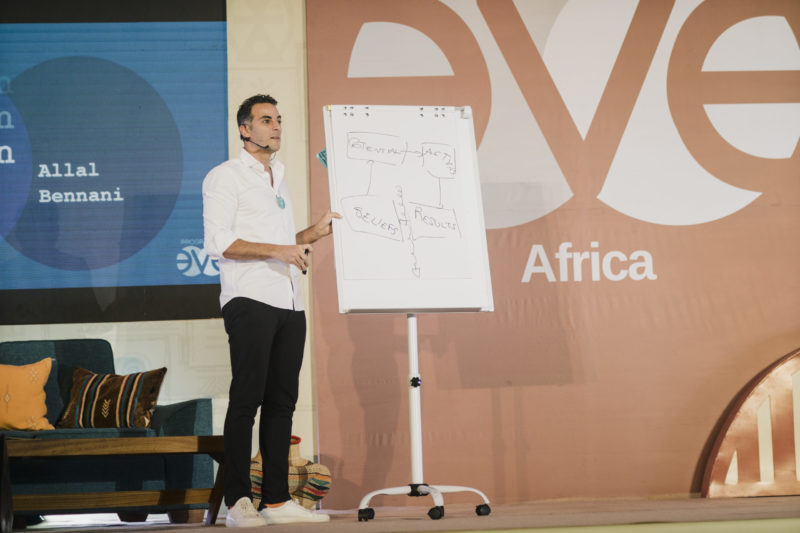If you’ve ever taken part in an edition of the EVE Program, then you’ll be lucky enough to know something about Non-violent Communication (NVC), because you’ll have attended a presentation or a workshop by Thomas d’Ansembourg, who is always a huge hit at the seminar. But for those who don’t know about it yet, we’re going to take a look at this conscious communication that encourages peaceful and actively pacified relationships. The EVE webmagazine team finds out more.
Is communication naturally violent?
Dare we say it? Could the conflict in our lives (both at home and at work) be brought about not so much as a result of disagreements, but as a result of how we communicate with each other? What is communication anyway? It’s usually defined as when people oscillate between “listening” and “expressing”. A simple idea, but the processes behind it are far from straightforward. In fact, latent violence can creep into our conversations, and lots of fights are actually caused by “misunderstandings” or not being “listened to” rather than the content of the issues being discussed.
When we express a need, we often express it as a complaint: “You’re not listening to me!” “Do you think I’m stupid?” “You should have told me that you were struggling with this project!” “You can’t be trusted!”, and so forth. How can the person on the receiving end of all that be expected to understand what you really need? When we hear this type of attack, we tend to put up defences rather than listen; we prepare our defence (or counter-attack) rather than look for answers to their concerns.
How to start using Non-violent Communication
The pioneer of NVC, Marshall Rosenberg, was born in Ohio in 1934. Having experienced anti-semitism during his childhood, the future psychologist wanted to be a peacemaker. Deeply troubled by the suffering caused by human intolerance, the young Rosenberg found inspiration in the work of the psychologist Carl Rogers. Mr Rogers developed a branch of psychology based on existential human psychology known as the “person-centered approach”, which is explained in the book that made his name, On becoming a person, published in 1961.
Because inspiration rarely comes from just one source, the forefather of NVC also draw from analysis on fundamental human needs by the Chilean economist and environmentalist Manfred Max-Neef, as well as from the experiences and speeches of key pacifists like Gandhi, who inspired the “nonviolent” element of the doctrine.
With a PhD in clinical psychology and a few years of practice under his belt, especially as a mediator in American schools experiencing racism issues, Marshall Rosenberg fine-tuned his process. He passed away in 2015, after sharing his ideas in more than 60 countries.
A drive for sustainable peace
Marshall Rosenberg made a huge impact: he founded the Center for Nonviolent Communication (CNVC) in 1984 and published several books on the subject, including Nonviolent Communication: a language of compassion, considered to be the reference on NVC. And of course, countless followers all around the world who are determined to share his ideas.
In Europe, former lawyer Thomas d’Ansembourg made it his mission to introduce and spread the approach throughout Europe. Even though it was still relatively unheard of in the early 1990s, NVC became very popular in the mid-2000s.
The CNVC helped to form a network of players who would promote the benefits of NVC all around the world.
An individual approach with a wider impact
By underlining the importance of empathy, listening, and openness to others, the primary goal of the NVC process is to pacify our inner selves. As Marcus Aurelius would say: “He who lives in harmony with himself lives in harmony with the universe”! “If you really want to listen,” says Marshall Rosenberg, “you must first listen to your own needs.” And that requires introspection, which is a key part of personal development.
When you are comfortable in yourself, you can listen to others without projecting your fantasies, judgments and expectations onto them. When your own mind is at peace, you can forge, maintain and develop positive relationships with those around you.
The language of feeling: a tool for peaceful dialogue
These positive relationships involve translating your intention into an impact, which requires three main components: empathy, authenticity and responsibility. And this four-step method, known as OFNR, can be used to establish and consolidate these elements:
- Observations: Describe the situation without judging it. If I unpack the facts of the matter, what is making me feel discomfort with regards to the other person?
- Feelings: Express a feeling while taking care not to attack the other person. What am I feeling deep inside? Is it anger (do you feel attacked, upset, bitter?) or tiredness (do you feel exhausted, helpless, powerless?) or perhaps it could be sadness (disappointment, desperation, shame?) or even fear (are you worried, shocked or overwhelmed?).
- Needs: Identify and express your underlying need. Do I need autonomy (the ability to make a choice, to have a space you can be free), integrity (respect, authenticity, trust, etc.) affection (belonging, connections, kindness)?
- Requests: Express a request that aims to satisfy this need, but one that respects the following criteria: it must be possible, concrete, specific and positive.
So that basically means phrases such as “When I see / I hear (Observation), I feel (Feeling). I need (Need)… Would you agree to… (Request)? For example:
“When you hand over a project to me and then change it without checking in with me, then share it with all the teams (Observation), I feel frustrated (Feeling) because I Need my work to be acknowledged. In the future, could we take some time to talk before the meeting to share how we feel about what I have prepared (Request)?”
But be sure to avoid a passive-aggressive tone when you express how you feel: e.g. when you say “misunderstood”, “abandonned”, “neglected”, or “betrayed”, this can make the other person take what you say as a judgment, a complaint or even a form of manipulation. “I feel ignored”, for instance isn’t really an “I”, it’s an aggressive “YOU” in disguise, (i.e. “you’re ignoring me!”).
And that shows how important it is, more than anything else, just to be “real” (even more important than being “nice”, as in Thomas d’Ansembourg’s best-selling book title) when using NVC.
Valentine Poisson & Marie Donzel, for the EVE webmagazine. Translated from French by Ruth Simpson.






